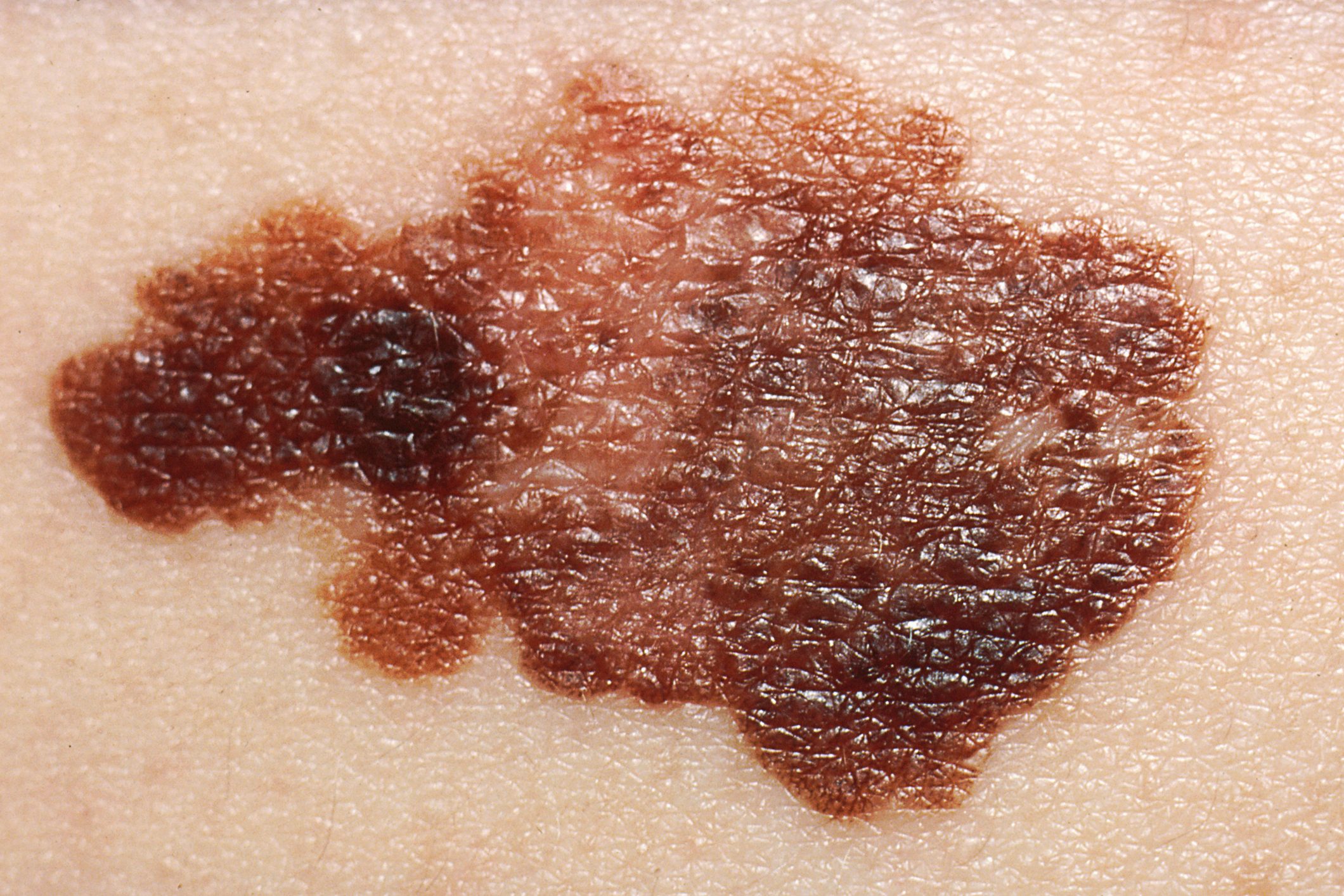Sunscreen and mindful exposure are still ways to manage your risk—but European researchers have made an intriguing, if slightly puzzling, discovery.

New Study: Low Levels of This Vitamin May Increase Melanoma Skin Cancer Risk

Melanoma might sound rare, as it accounts for 1% of skin cancer diagnoses; but those diagnoses are serious because data published by the National Library of Medicine notes that melanoma causes 75% of skin cancer-related fatalities. According to estimates from the American Cancer Society (ACS), roughly 100,640 people are diagnosed with melanoma each year, and 8,290 people lose their lives from the disease.
The Cleveland Clinic explains that UV light from the sun or tanning beds is most commonly to blame for skin cancer. In cases of melanoma, the cancer forms in cells called melanocytes. “Melanocytes produce melanin, a brown pigment that gives your skin its color and protects against some of the sun’s damaging ultraviolet (UV) rays.” The Cleveland Clinic adds that melanoma can metastasize, or spread, to other major organs such as the lungs, liver, and brain, as well as the skeletal system and other sites.
In addition to some of the main risk factors for melanoma, like a family history, light coloring, and having moles, a meta-analysis has identified a lifestyle factor that can also add to the risk. Dermatology researchers in Germany found that low levels of vitamin D can also increase the chances of developing melanoma.

That research was published in January 2025 in the medical journal Anticancer Research. The team found that on average, patients with melanoma had lower levels of the vitamin D that’s produced in the liver compared against the healthy controls.
This is a bit of a catch-22, and here’s why: Vitamin D is synthesized in the liver as a result of sunlight exposure. So here’s how the researchers explain the relationship, saying UV radiation from the sun “represents the most important environmental risk factor for skin cancer. However,” they add, “vitamin D synthesis from sun exposure has been reported to exert anti-carcinogenic effects on melanocytes in vitro.” In other words, some sun exposure has shown to help fight melanoma. The researchers acknowledge what they’ve helped reveal as the “complex interplay between UV radiation and malignant melanoma.”
The team also determined that low vitamin D levels were associated with worse outcomes in those diagnosed with melanoma: “We observed significantly increased risks for thicker tumors, mitotic tumors, and higher tumor stages in vitamin D-deficient patients,” they report, noting that the findings contribute to the “growing body of evidence supporting the tumor-protective role of vitamin D.”
So, understanding that sun exposure has its dangers—and now trying to process the possibility that the body might need sun exposure to make the kind of vitamin D the researchers found was lacking—what are you supposed to do? One strategy might be to ensure you don’t get sunburned or spend prolonged periods in the sun—instead, national experts say you can safely increase your vitamin D level by getting just eight to 10 minutes of direct sun exposure per day.
Also, increase your dietary vitamin D intake through foods like omega-3 fish, mushrooms, egg yolks, and fortified cereals. Vitamin D supplements, taken with a meal for optimized absorption, can further help you raise your levels safely.
And, of course, taking skin safety measures any time you leave the house can also help prevent skin cancer. Wear a high-SPF, broad-spectrum daily sunscreen, stay in the shade during peak sun hours, cover up with long sleeves, hats, and sunglasses as necessary, and see a dermatologist for annual skin checks.
For daily wellness updates, subscribe to The Healthy by Reader’s Digest newsletter and follow The Healthy on Facebook and Instagram. Keep reading:
- Over 30? This Cancer Screening Should Now Be “Standard” for You, Say Expert Doctors
- Women’s Choice in a Partner Has Been Linked with Higher Cancer Survival in a New Study
- New Research: Being Overweight Increases the Risk for These 2 Cancers
- 75% of People With Autoimmune Disease Have This In Common, New Study Finds




















